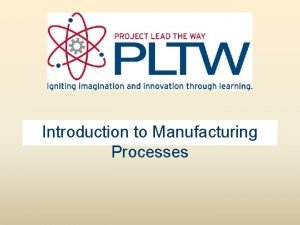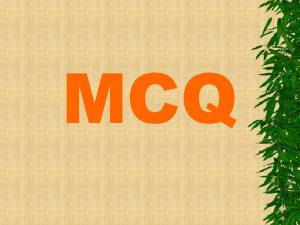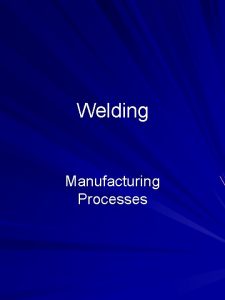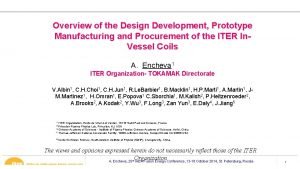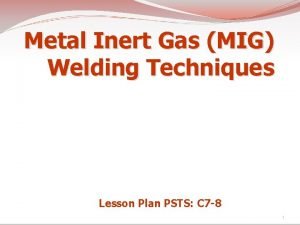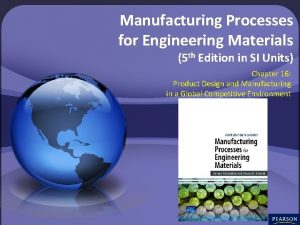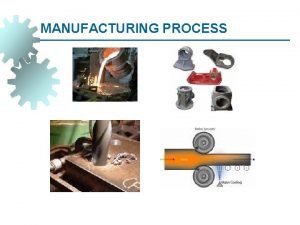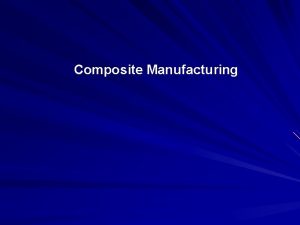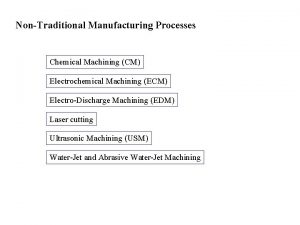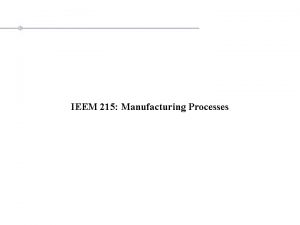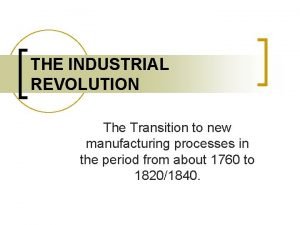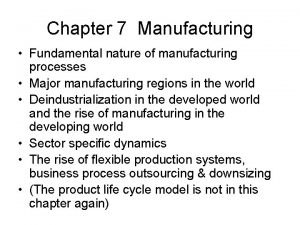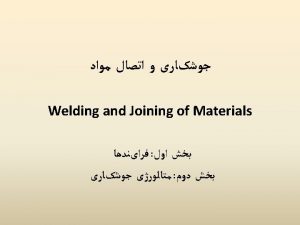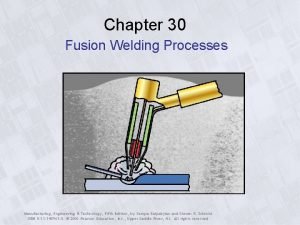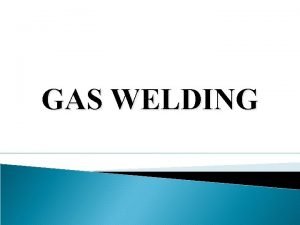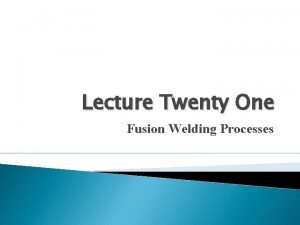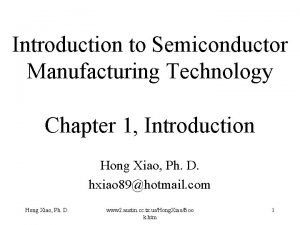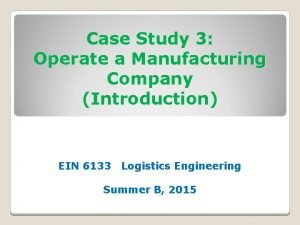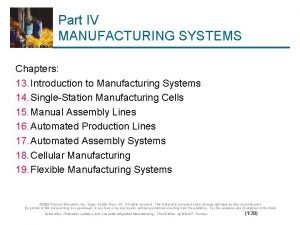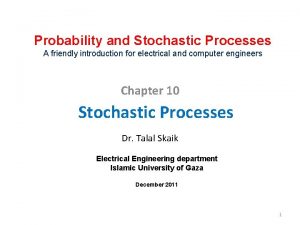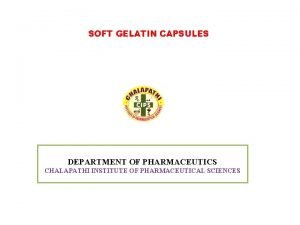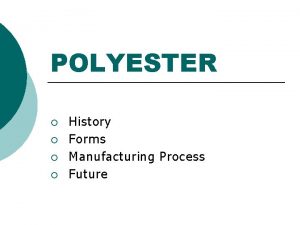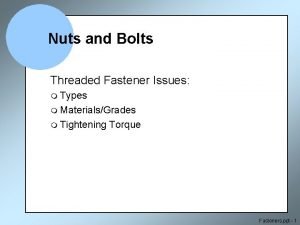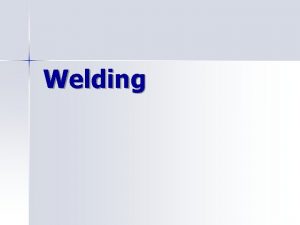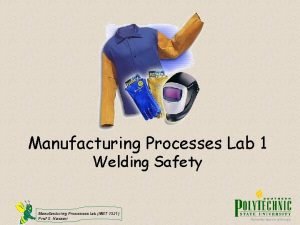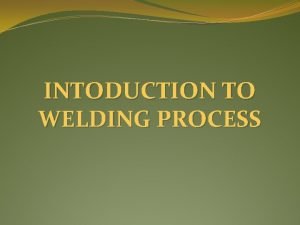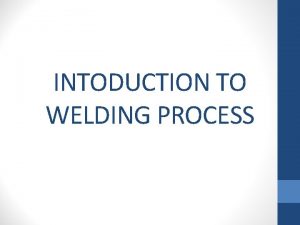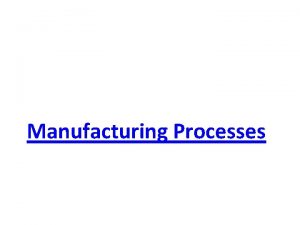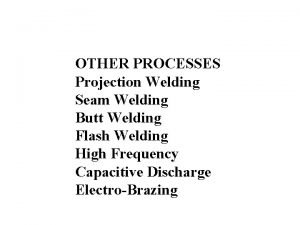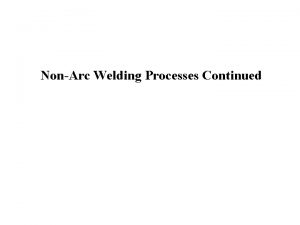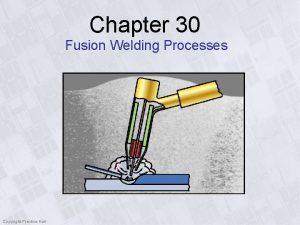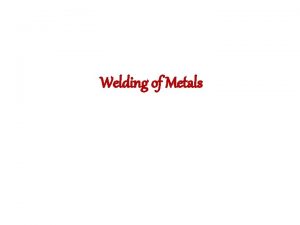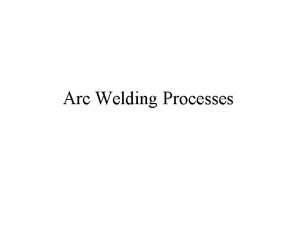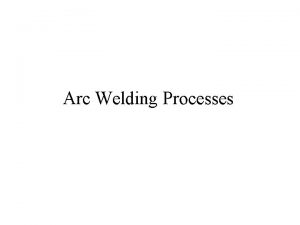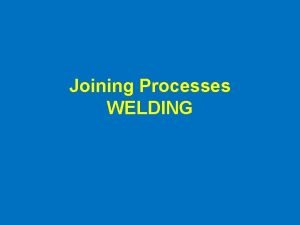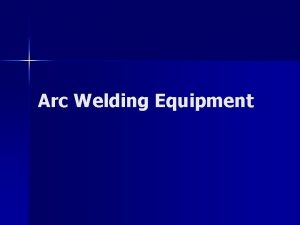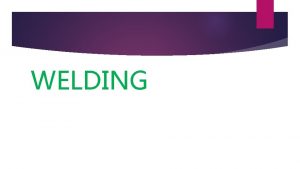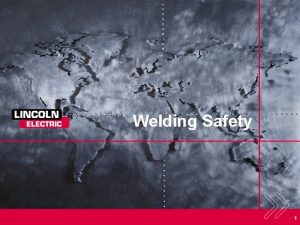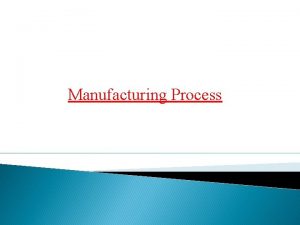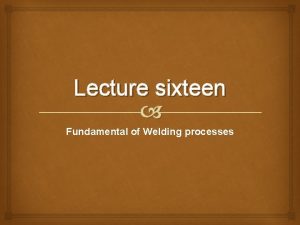Welding Manufacturing Processes Outline Introduction Welding Process Fusion

































- Slides: 33

Welding Manufacturing Processes

Outline Introduction Welding Process Fusion Welding Arc Welding Resistance Welding Oxyfuel Welding Laser Welding Solid-State Welding Diffusion Welding Friction Welding Ultrasonic Welding Metallurgy Welding Defects

Welding

Welding Applications

Welding Process A concentrated heat source melts the material in the weld area; the molten area then solidifies to join the pieces together Sometimes a filler material is added to the molten pool to strengthen the weld

Types of Welding Fusion Welding Use heat to melt the base metals and may add a filler metal Solid-State Welding Uses heat and pressure, or pressure alone, to join the metals; the temperature does not reach the melting point

Types of Welding

Physics of Welding In fusion welding, a source of high-density heat energy raises the temperature of the surfaces enough to cause localized melting; if the heat density (power ÷ surface area) is too low, the heat is conducted away as fast as it is added and melting does not occur

Arc Welding Uses an electric arc to heat and melt the work metals

Arc Welding

Arc Welding

Arc Welding

Resistance Welding Uses heat and pressure to join metals; the heat is generated by resistance to an electrical current at the welding point

Resistance Welding Example of a resistance welding machine

Oxyfuel Welding Uses a high-temperature flame from the combustion of acetylene and oxygen

Laser Welding Uses a laser beam to melt the metals; can be used for deep, narrow welds

Laser Welding Laser welding of a pipe

Diffusion Welding Uses heat and pressure to join the metals by solid-state diffusion; the temperature is less than half the force melting temperature heat atomic movement force

Friction Welding Uses pressure and frictional heat caused by mechanical rubbing, usually by rotation

Friction Welding

Ultrasonic welding Uses rapid vibrations to break up surface films and heat the surfaces, allowing them to bond

Welded Joint Fusion zone The area of base metal and filler metal that has been completely melted Weld interface A thin area of base metal that was melted or partially melted but did not mix with the filler metal Heat affected zone The surrounding area of base metal that did not melt, but was heated enough to affect its grain structure

Welding Metallurgy The base metal(s) and filler metal mix together during melting, forming an alloy when they solidify The solidification of the metals can be considered as casting a small amount of metal in a metal mold

Welding Metallurgy

Stresses and Distortion

Welding Defects Cracks Fractures in the weld itself or in the metal adjacent to it Cavities Porosity and shrinkage voids; similar to casting defects Solid inclusions Nonmetallic solid material embedded in the weld metal

Welding Defects Incomplete fusion A weld bead that does not fill the entire joint cross-section Imperfect shape / unacceptable contour A weld that does not have the proper shape for maximum strength Miscellaneous defects Arc strikes (damage from direct contact with an electrode), excessive spatter (drops of molten metal that solidify on the base parts), and others

Inspection and Testing Visual inspection Visually examining the weld for surface defects Nondestructive evaluation Uses various methods that do not damage the specimen Destructive testing Methods in which the weld is destroyed during the test or to prepare the specimen

Visual Inspection Visual inspection checks for: - conformance to dimensional specifications of the part design - warpage - cracks, cavities, incomplete fusion and other defects visible from the surface

Nondestructive Evaluation Dye-penetrant and fluorescent-penetrant tests use a dye or fluorescent substance to make small defects more visible Magnetic particle testing (limited to ferromagnetic materials) use small magnetic particles to find distortions in the magnetic field caused by defects Ultrasonic testing uses the transmission of sound through the specimen; discontinuities scatter or absorb the sound Radiographic testing uses X rays or gamma rays to detect flaws

Destructive Testing Mechanical tests use a weld joint in a conventional testing method, such as a tensile test or shear test Metallurgical tests involve creating metallurgical specimens, such as micrographs, to examine the features of the weld

Summary Fusion welding melts the material then allows it to solidify and join it together Solid-state welding uses pressure, and sometimes heat, to allow the metal to bond together without melting Welding allows the production of parts that would be difficult or impossible to form as one piece

 Introduction to manufacturing processes
Introduction to manufacturing processes Forming and welding mcq
Forming and welding mcq Fusion welding process
Fusion welding process Welding manufacturing process
Welding manufacturing process Fusion prototype manufacturing
Fusion prototype manufacturing Mig weld technique
Mig weld technique Manufacturing cost vs non manufacturing cost
Manufacturing cost vs non manufacturing cost Job order vs process costing
Job order vs process costing Manufacturing cost vs non manufacturing cost
Manufacturing cost vs non manufacturing cost Manufacturing cost vs non manufacturing cost
Manufacturing cost vs non manufacturing cost Additive manufacturing vs subtractive manufacturing
Additive manufacturing vs subtractive manufacturing Manufacturing process for engineering materials
Manufacturing process for engineering materials Classification of production
Classification of production Pultrusion process advantages and disadvantages
Pultrusion process advantages and disadvantages Nontraditional manufacturing processes
Nontraditional manufacturing processes Traditional manufacturing processes
Traditional manufacturing processes The transition to new manufacturing processes
The transition to new manufacturing processes Fundamental manufacturing processes
Fundamental manufacturing processes Concurrent in os
Concurrent in os Esw welding process
Esw welding process Draglines welding definition
Draglines welding definition Gas welding conclusion
Gas welding conclusion Fusion arc welding
Fusion arc welding Science fusion introduction to science and technology
Science fusion introduction to science and technology Quote sandwich paragraph example
Quote sandwich paragraph example Introduction to semiconductor manufacturing technology
Introduction to semiconductor manufacturing technology Manufacturing company introduction
Manufacturing company introduction Introduction to manufacturing systems
Introduction to manufacturing systems Stochastic process
Stochastic process Welding porosity
Welding porosity Difference between hard and soft gelatin capsule
Difference between hard and soft gelatin capsule Manufacturing process of polyester
Manufacturing process of polyester Bolt manufacturing process ppt
Bolt manufacturing process ppt Sinter gear factory
Sinter gear factory
